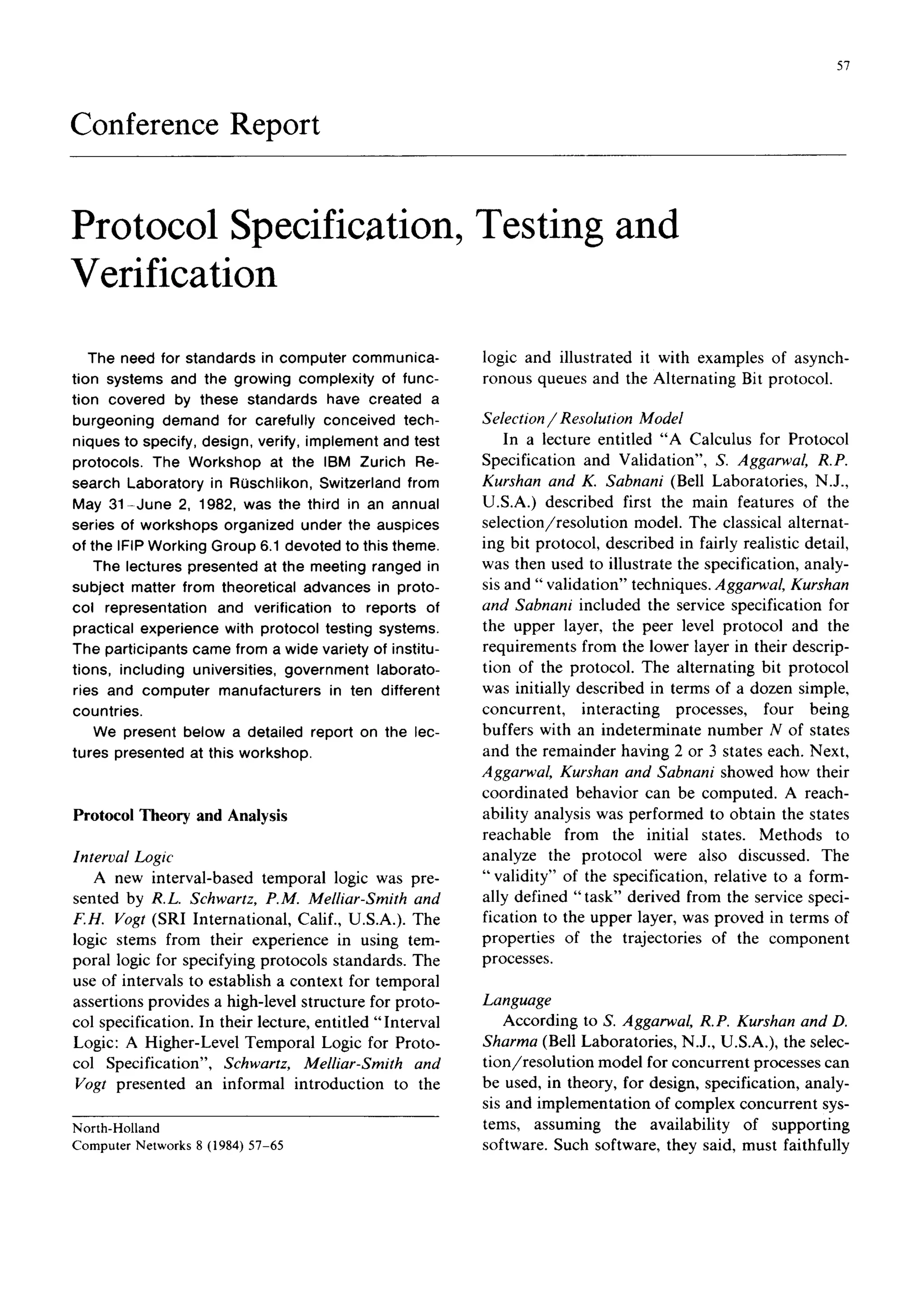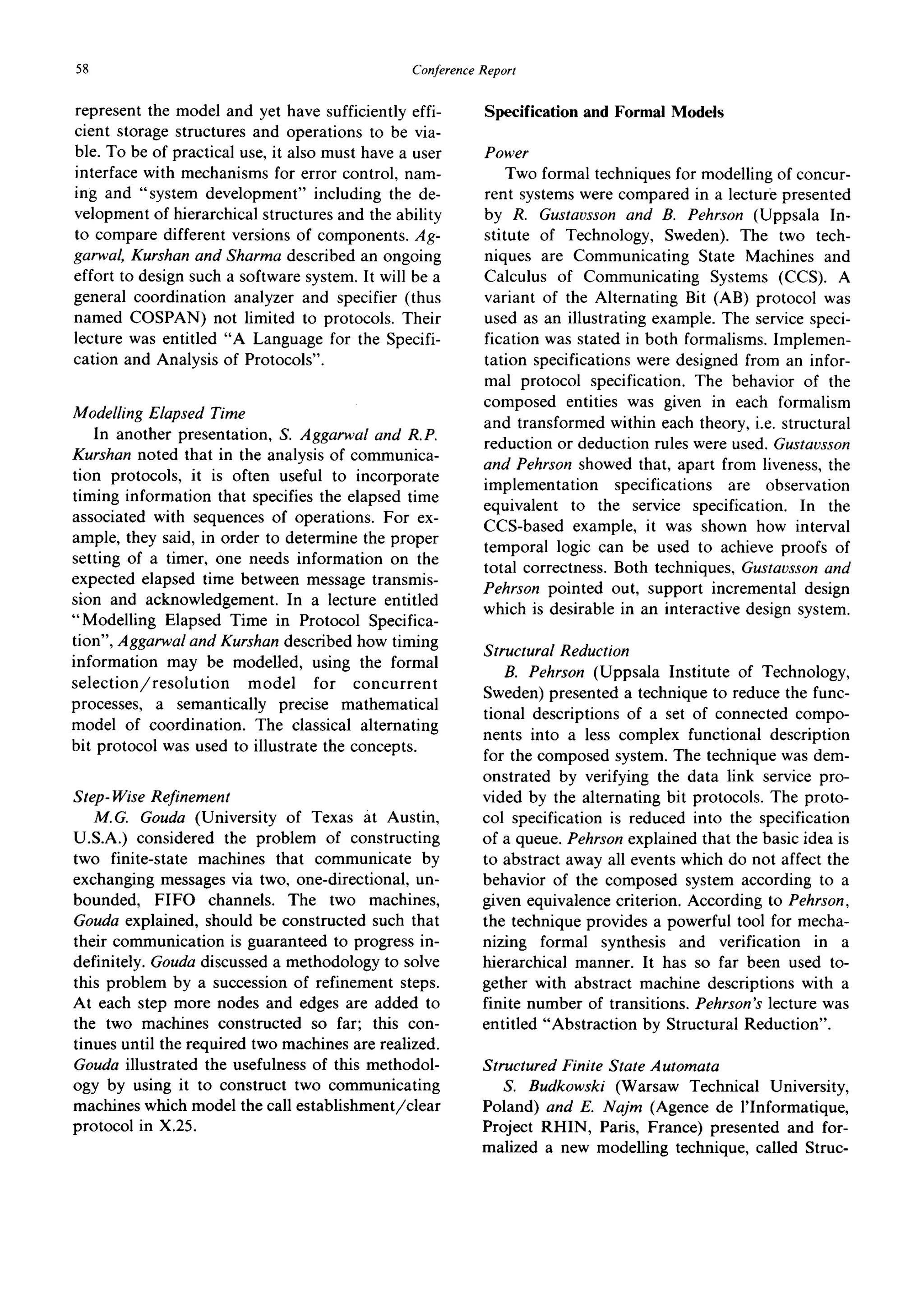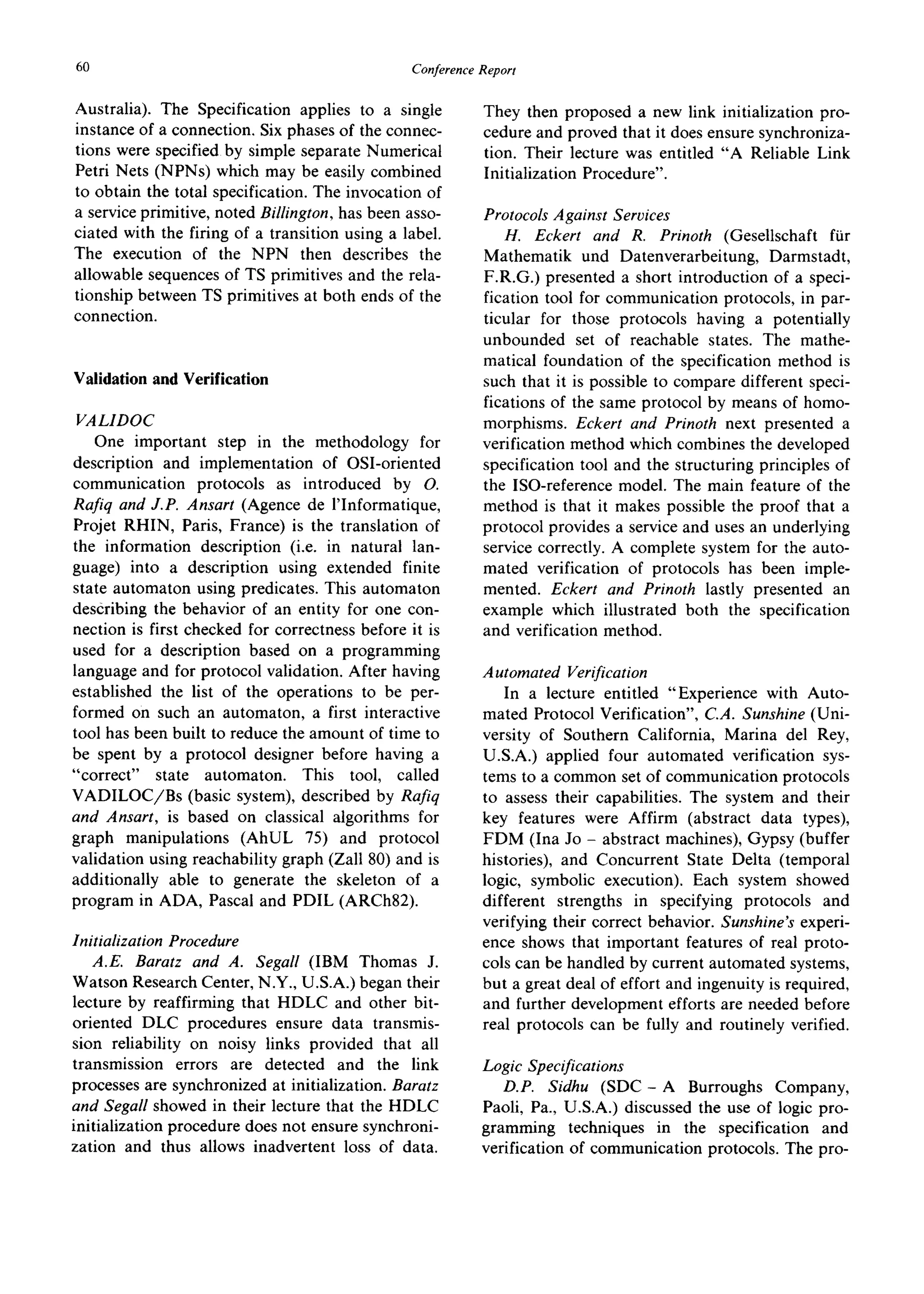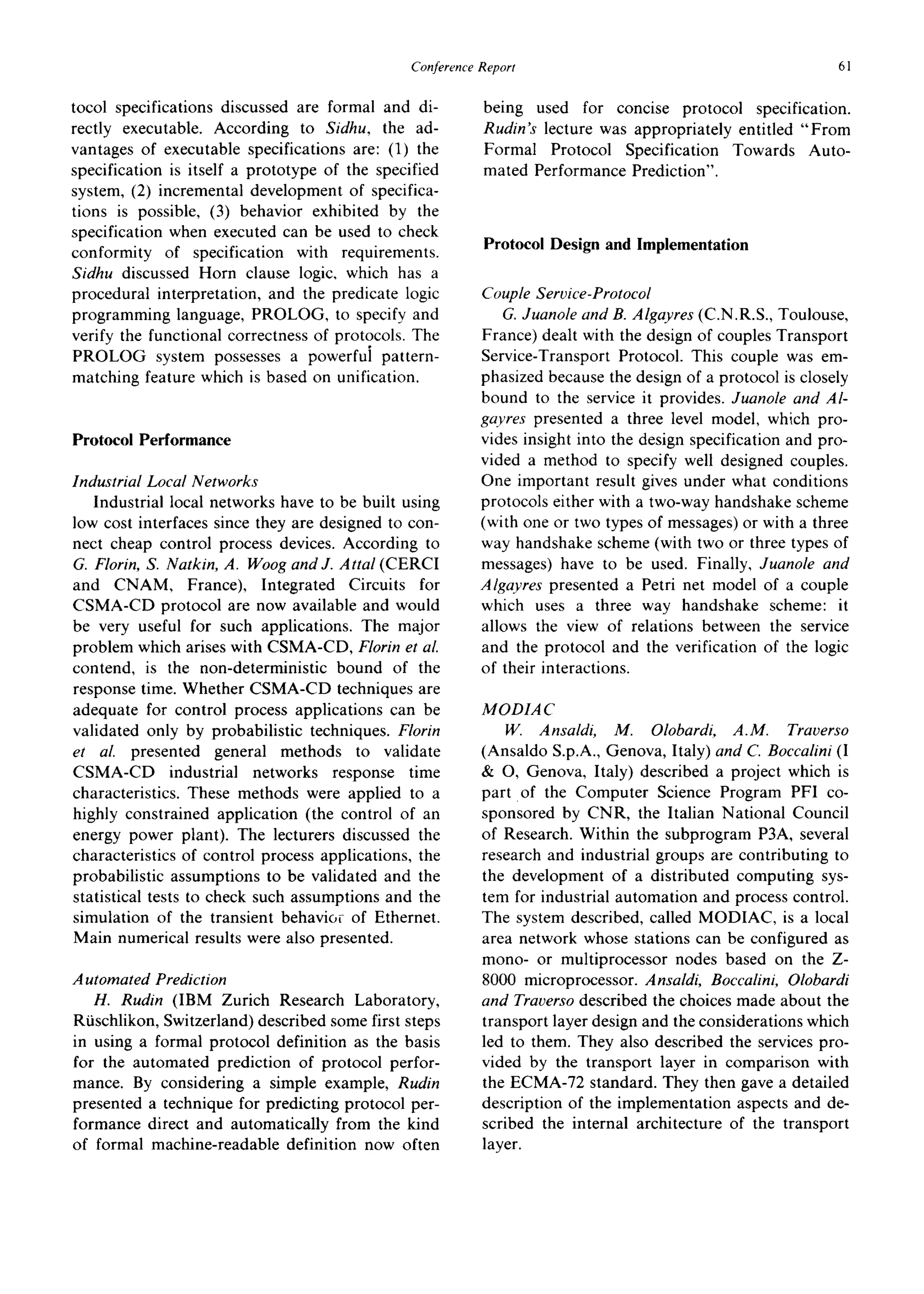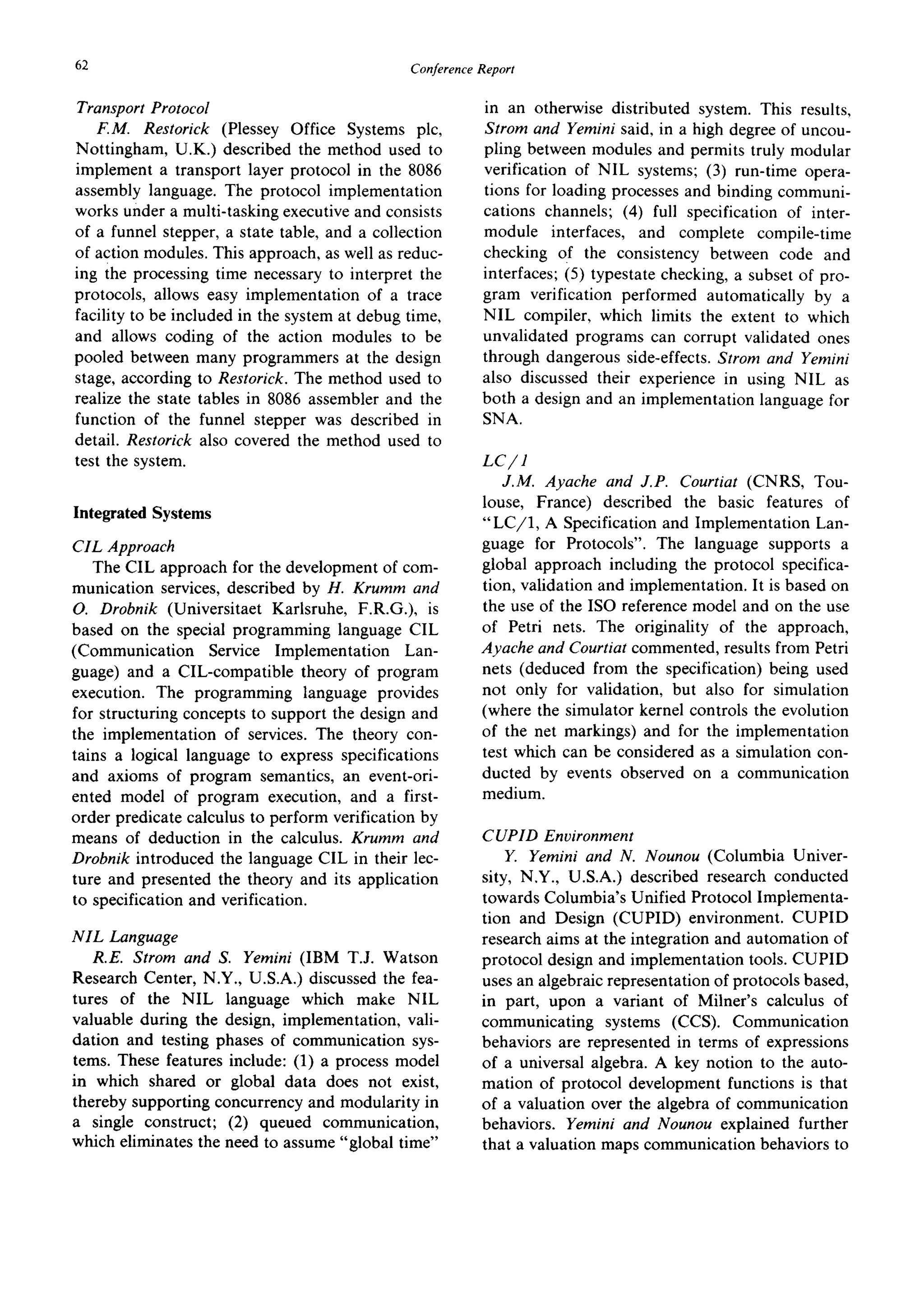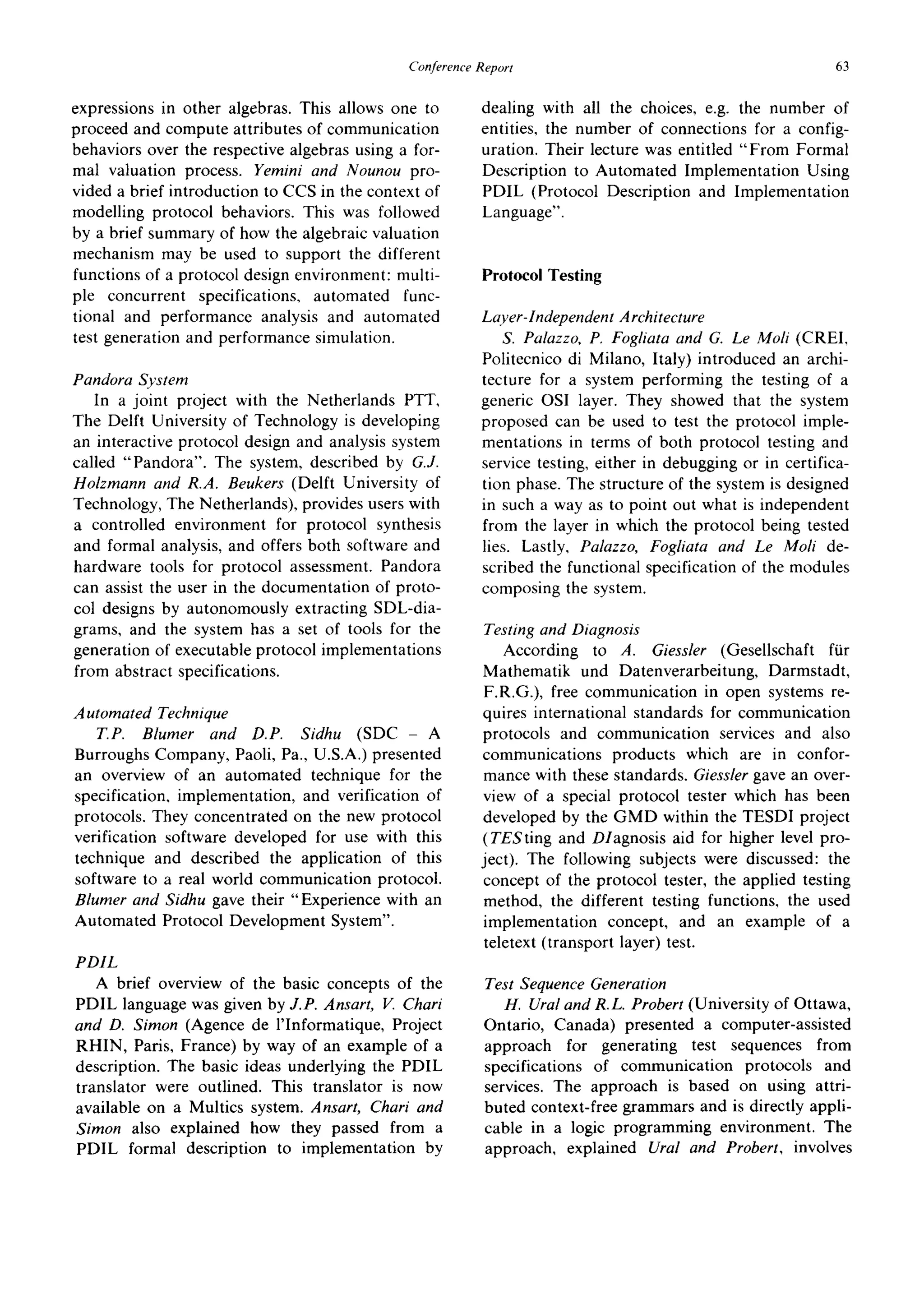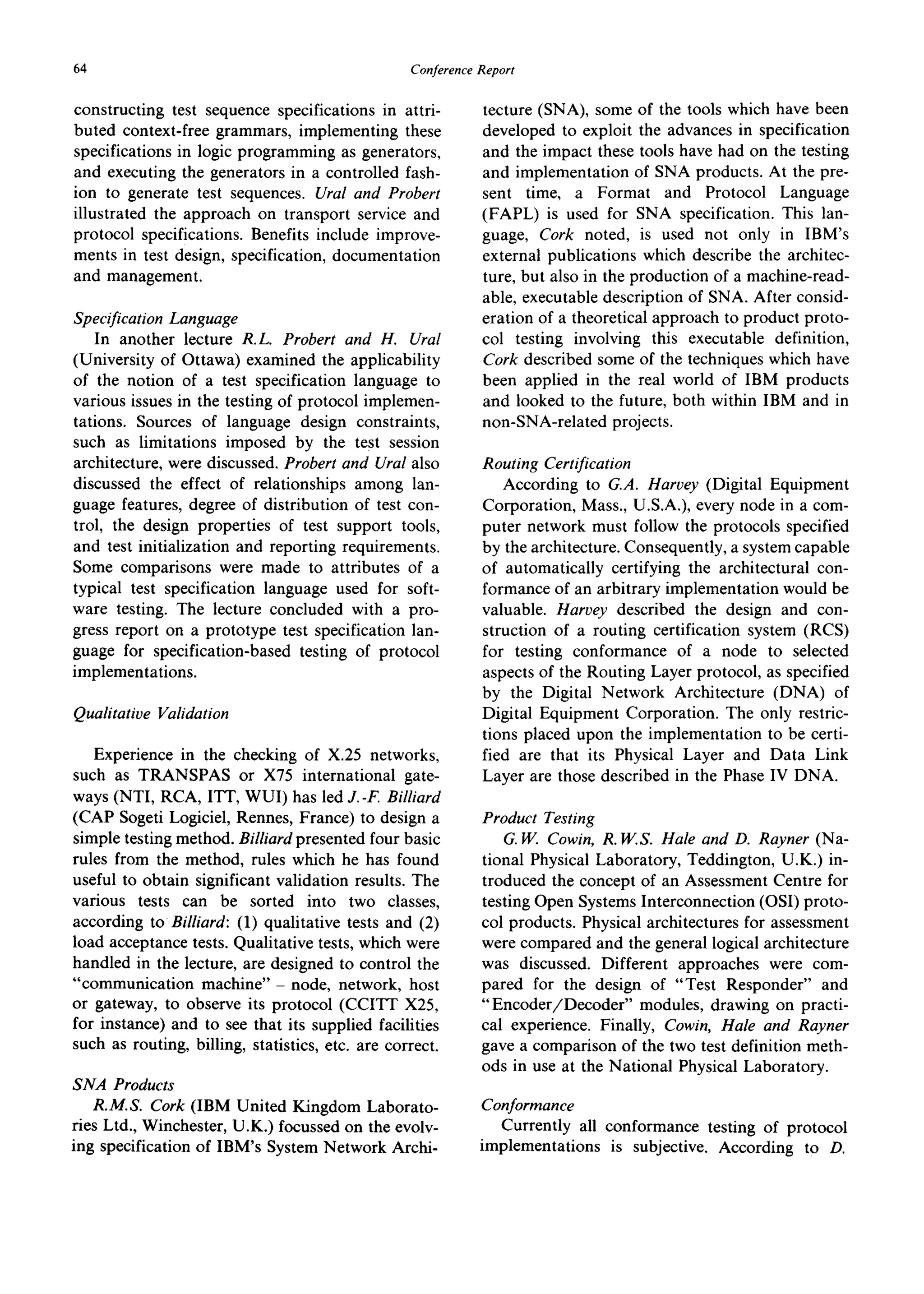This document summarizes a conference on protocol specification, testing and verification. It discusses several approaches that were presented, including interval logic for protocol specification, a selection/resolution model for specifying and analyzing the alternating bit protocol, modeling elapsed time, step-wise refinement for constructing communicating state machines, comparing communicating state machines and calculus of communicating systems, using structural reduction to verify protocols, and specifying protocols using finite state automata, abstract data types, process algebra and Petri nets. The conference brought together participants from universities, government labs and computer companies in 10 countries.
